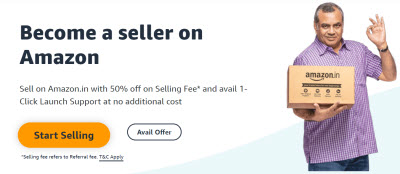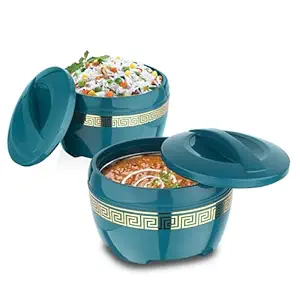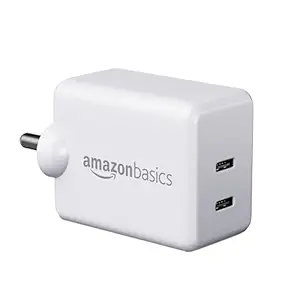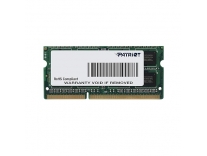
Date: Apr 24,2023 20:49
How to become an Amazon seller & Sell on Amazon with 50% less Selling Fee
Offers
- HDFC, Bob, Yes Bank, , HSBC, Federal Bank, ICICI 10% off + Bonus offer Details
- Amazon Collect Offer Cashback Rewards Collect here
- Amazon Pay ICICI Bank credit card 5% back with for (Prime members) 3% back for others.
In addition to Amazon US, more people are seeking other places to launch businesses. CNBC estimates that over the next five years, Amazon India will increase its overall growth by up to 20%. Therefore, launching a business on Amazon India right now will place you ahead of the Amazon curve and enable you to be a part of something GREATER than yourself. What's the best place to begin?
Step-by-step instructions on how to sell on Amazon India are provided in this comprehensive seller's guide. You'll discover how to create an Amazon India account, what to sell on the marketplace, and what kind of profit to anticipate. Aside from that, we'll share with you our best success advice. Sounds wonderful, doesn't it?
Let's begin with a quick overview of the expanding market for those of you who are more interested in Flipkart and Snapdeal and would like to learn more about Amazon India.
How does Amazon India work?
The prominent B2C online marketplace Amazon.com has an Indian counterpart called Amazon. in. Local shoppers can access the 20+ million products that are sold on the marketplace by national brands and retailers. A cuddly bear to a pricey smoked walnut 2-door wardrobe is among the things that are divided into many categories.
What Is the Amazon Seller Number in India?
More than 300,000 vendors are registered on Amazon India, with small and medium-sized businesses making up the majority of them (SMBs). Over 14,200 PINs nationwide are used by these merchants to offer their products. The bulk of Indian Amazon vendors has their headquarters in Delhi. Business Today, as a source
Business Model Types on Amazon India
You must select your preferred business model before you begin selling on Amazon India. There are three primary business models that Amazon merchants might use:
Shopping Arbitrage
In this business plan, you purchase goods from a nearby retailer and resell them on Amazon. The main concept is to locate goods at a discount that are in great demand but have short availability. One of the quickest methods to start selling on the internet and get some quick cash is with this method. The worst business model, therefore, is one that doesn't scale well. The prices that retailers set are essentially a growth constraint for you. It also has hazards, including the possibility of account suspension if you are not vigilant about the products you sell. The ability to relist a product on Amazon is not universal.
Wholesale
Here, you purchase items from well-known brands (such as Samsung, iPhone, Lakme, etc.) at wholesale costs and offer them for sale on Amazon. in. Before making a listing, you must, of course, get in touch with the brands and obtain their consent. Sometimes, especially if you are a new vendor, this is difficult.
Private Brand
Our favorite is this one without a doubt. It entails launching your private label on Amazon India, as the name suggests. You research your target market and conduct a market analysis before creating a successful product. The best thing is that you get to decide on the pricing and retain every penny of the profit. Although it is undoubtedly ambitious, Amazon's business model offers the greatest rewards.
We'll then examine the advantages of selling on Amazon India.
Reasons to Sell on Amazon India
Any business decision must be supported by a sound argument and an unbiased evaluation of the available data. The following are some justifications for thinking about selling on Amazon India:
Reach Thousands and Hundreds of New Clients
Over 100 million Indians have accounts on Amazon.in. Every month, more than 300 million people visit the website. Selling on Amazon India will allow you to reach a far larger audience and introduce your goods to tens of thousands of new buyers.
Increasing Sales
At least 150,000 orders are placed on Amazon India every day. For every additional marketplace seller, there is one order. Very good indeed. And you can crush sales if you give your customers high-quality goods.
low entry threshold
On Amazon India, practically anyone may start selling. No unique prerequisites exist to participate in the marketplace. All you need to get started is an active bank account and certain identification documents.
Little rivalry
Although the numbers are outstanding, Amazon India is still very much in its infancy and has a lot more opportunities to expand. The opportunity is now to participate before the competition heats up.
Outstanding customer service
Customers who use Amazon's FBA program are guaranteed a great shopping experience with quick delivery and easy returns. Even better, it streamlines the fulfillment process for sellers, saving you time and letting you concentrate on more crucial aspects of your company.
Steps to become an Amazon seller
Step 1: Create an Amazon India account
Choosing a fulfillment method comes after deciding what you're going to sell in steps two, three, and four of the Amazon India Seller Central account setup process.
Let's go over each one individually.
How to Sign Up to Sell on Amazon India in the First Step
First and foremost, you must register as a seller on Amazon India. Naturally, we'll guide you through that procedure.
- Click "Start Selling" at seller central.amazon.in to get started.
- "Create your Amazon account" can be chosen on the login page.
- You must provide your name, mobile number, sign-up email, and password. Select "Continue"
- For ownership verification, Amazon will send an OTP to your telephone number. Once your identity has been verified, you'll be prompted to enter your store name and provide more information and supporting documentation to complete your seller registration request on Amazon India.
- the paperwork needed to sell on Amazon India
- When registering on Amazon.in as a vendor, you must have the following documents:
- The number for the Goods and Services Tax (GSTIN)
- Temporary Account Number (PAN)
- Account number for a bank
- a copy of your certificate of incorporation, if you are the owner of a private limited company.
- Copy of the Memorandum of Association, if you are the owner of a private limited firm.
Step 2: How to Select Products for Amazon India Sales
Your success depends on choosing the appropriate product. You can't pick any item at random and expect to make a respectable quantity of sales from it. Before choosing your goods to sell on Amazon, there are several variables to take into account.
Demand
First and foremost, you must ascertain whether there is sufficient market demand for the goods. Most essential, it needs to be a year-round success, not just during a few specific months. We advise choosing a product that sells at least 10 units every day.
Profit
You would want your company income to at least match your full-time salary if you were beginning a business, wouldn't you? In other words, if you sell 10 items per day (or 300 units per month), your minimum profit should be 120 for each sale.
Competition
To compete, you must identify a product niche. It's not a good idea to stand around and watch as your rivals steal all the business. Examine the number of reviews your competitors have to gauge competitiveness in your niche. Simply go on to the following product if the majority of the first-page sellers have more than 500 reviews.
Marketing Gap
It's crucial to recognize market gaps. You'll be able to enter your niche and create a strong brand with its aid. Discover what clients are saying about competing listings in your specialized market.
Step 3: How to add products on Amazon India.
You need to establish a listing on Amazon India after deciding what you want to sell and choosing a supplier for your product. Your goods are now added to your Amazon Seller Central account after you create a listing. It is an easy process. Simply adhere to the instructions below:
- Log in to India Seller Central Amazon
- Select "Add a Product" under the Inventory tab.
- "I'm adding a product not sold on Amazon" can be found on the following page.
- Select the product category and kind you want.
- Your brand name, product title, and product identity code should be entered. Complete all additional required fields.
- For your product listing to be submitted for evaluation, click "Save and Finish."
Step 4: Choose a fulfillment option.
You have a choice between three different fulfillment methods:
- Fulfillment by Amazon (FBA)
- Easy-Ship
- Self-Ship or Fulfillment by Merchant (FBM)
The greatest ease for sellers is offered through FBA. The Amazon India Fulfillment Center receives your inventory, and the on-site workforce handles the rest. It handles any inquiries while it picks, packs, and ships your product to your clients. Even return shipping is handled by Amazon. But FBA charges a price.
The following is Easy-Ship. In this case, you're in charge of the packaging and storage while Amazon assists with the delivery. Every pickup has a planned time in advance. For individuals who own a space that may serve as a rental property, this may be the ideal choice.
Large-scale vendors without any logistical restrictions should use self-ship. The products may be delivered, packaged, and stored without any issues. Alternatively, if you want to sell larger, heavier items on Amazon India, you can choose Self-Ship. You can avoid paying the FBA storage cost in this way.
What is the cost of selling on Amazon India?
According to your chosen fulfillment method, Amazon selling fees for India may also include closing fees, weight handling fees, and other expenses. Right now, selling on Amazon does not require a monthly subscription.
Is Selling on Amazon better than on Flipkart?
One of the major participants in India's online retail market, Flipkart is a serious rival to Amazon.in. Over 200 million people visit it each month, giving it a market share of 31.9%. Nevertheless, in terms of features, pricing, promotion, and customer service, it lags behind Amazon even with these remarkable figures.
With a significant market share of 35%, Amazon India has become the most coveted online brand in the nation, coming in second only to Flipkart in terms of size. It is rather impressive that the company, which only began operations in 2013, was able to catch up to a much more established rival in such a short period.
Conclusion
There is currently a great opportunity with Amazon India. And it is anticipated to keep rising thanks to Amazon's investments in infrastructure and partnerships with regional vendors.
You must follow a few critical procedures if you want to succeed, like assessing your niche, conducting keyword research, and optimizing your listing. To make your ascent to the top as easy as possible, you must know how to perform each one most finely.
More Deals from amazon
Deal Price History
- Posted by Admin on 23rd Mar 22:55:00 Rs. 0 in Daily Deals
- Posted by Admin on 23rd Mar 22:52:00 Rs. 0 in Daily Deals











































